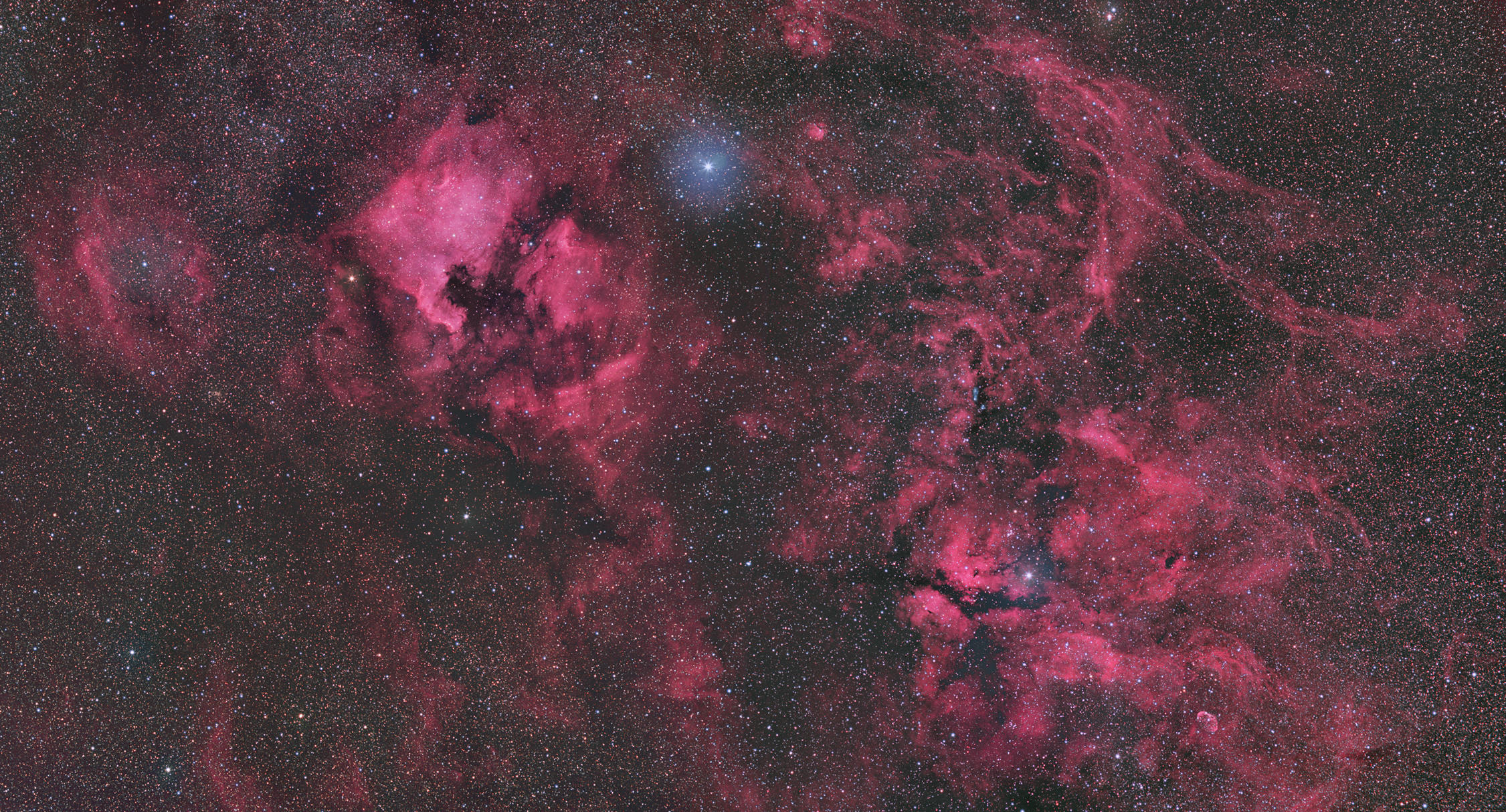Cygnus Widefield
Characteristics:
Magnitude: Not determined
Size: FOV = approximately 22 degrees x 11 degrees
RA: 20h 31m 05s (J2000)
Dec: 44 degrees 18' 46" (J2000)
Description:
This image represents a widefield
mosaic of two large panels taken with a 200mm Pentax lens (11 deg x 11
deg each panel) and the U16M camera. The region around the star
Sadr, also
known as Gamma Cygni, is full of emission nebulosity (designated SH-108
which includes IC
1318). IC 1318 is
located within the constellation Cygnus, which includes famous
landmarks along the summer Milky Way, like the
Pelican and North American Nebulae and the Crescent Nebula.
Please click the link to the labeled version above for more
details. Other images that I've taken of this region include a higher
resolution version of the North American and Pelican Nebulae, as
well as a higher
resolution version of the Gamma Cygni region. This
area is very rich sulfur, hydrogen, and oxygen gases which are excited
by high energy stars in the region to emit in SII (around 672nm), HII
(656nm), and OIII (around 495nm). More information about this
region can be found at Rob
Gendler's website.
Photographic
Details:
Dates: August 13, 14, 15, 16,
2015
Scope: Pentax 200mm lens at f5.6 on the Takahashi
NJP
Mount
Autoguider: SBIG ST-402 with
60mm guidescope, focal length 227mm
Camera: Apogee U16M at -20C, with
7 position 50mm square filter wheel (Apogee FW50-7S)
Filters: Baader
narrowband
and LRGB filters, 50mm square
Exposures: Ha, 6 hours (3 hours per panel, 2 panels); RGB,
total of 6 hours (3 hours per panel, 2 panels).
Post-processing:
Calibrated, aligned, and stacked in Maxim, followed
by DDP
in ImagesPlus (IP). Further processing in Photoshop CS (16
bit format).
Please
note: Graphics on this website
may not be reproduced without author permission.
Back to Nebulae
Home

